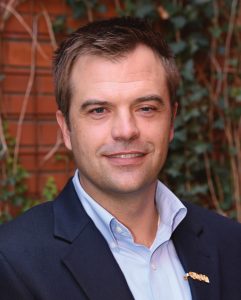Continuing our series on automation (Installment 1, December 2021, Installment 2, March 2022), I sat down (virtually) in January 2022 with two more industry experts in digital design: Matt Sweeney, Production Technology Manager at PES Structural Engineers, and Derek Pedersen, Principal at JVA Consulting Engineers. Both serve on the SEI Digital Design Committee. Below are highlights from our discussion.
In the previous session of this series, we heard a lot about automating the repetitive tasks in an engineer’s day. Where have you seen automation of repetitive tasks work well? Or where is there room for improvement right now?
Sweeney: One example is that we have been able to get automation working well with dimensioning. On detailed drawings where we dimension elements a number of times, we’ve been able to get some tools to work really well. In the past, we used interns or engineers to spend a lot of time, and they would just click, click, click. And you still never knew whether they hit the right reference plane. These tools work well because they do the same thing and hit the same line every single time, and they can do it over, say, 200 or 300 wall panels identically. Where that doesn’t work is that the computer sometimes cannot figure out when things overlap, so you still spend some time massaging things, but it does save an amazing amount of that mundane clicking.

Pedersen: We have had some success assisting PMs in getting their projects started with master content. We’ve got content organized by building systems. We bring it into the project file so everything is set up and ready for the engineer. We concentrate on that heavily so that the engineer is not reinventing the wheel. Similarly, we have leveraged our database of past projects so they can be recalled based on various combinations of project facets (material type, size, location, building type), allowing for accessible ‘go-by’ content. This is a great way to get new staff up to speed on how we do things. We have also dabbled into Clarity [an automated task server program by Imaginit]. We use that internally to update our content routinely because we do not have a BIM manager. We wear different hats, so pushing it out to staff is a hurdle when making updates. Clarity helps bridge that gap and automates communication. We can schedule pulling the model off the architect’s BIM 360 site and posting PDFs. There are a lot of possibilities there.

You both have broad experience with project types. Do you find that there is a specific structural material or project type that lends itself best to automation methods or advanced digital tools in general?
Pedersen: Obviously, steel and concrete have a lot of potential. I think in the last AutoCAD University, somebody had some generative design automation of floor plates for wood-framed houses. But we are already so fast at wood houses in our office. We turn around a single-family residence in one or two days, so there’s not a whole lot of fat to trim there.
Sweeney: But it can vary a bit based on your size and approach. JVA and PES are similar-sized and scaled firms. We don’t have development teams to get things like generative design or higher-level parametric tools. However, areas of repetition and automation ahead of time, like with dimensioning that I mentioned or detailed drawings on industrial warehouse buildings with hundreds of wall panels, that kind of repetition lends itself to automation at a scale that we can do, compared to bigger firms with development teams.
Pedersen: Yes, I agree. We sort of stand on the shoulders of giants, if you will, and let them go through the hard knocks to sort out what works. That’s why we are always plugged into conferences and committees. You learn where things take root and where they see success: what’s worth our time to invest in and to check out. We understand this works best as we do not have the bandwidth to be the earliest adopters.
Digital tools may appear on the surface to be more logical for the design of new construction projects than for existing structures. But where have you seen digital tools used well or creatively on existing structures?
Sweeney: Reality capture, whether it is a laser scan or even just decent photogrammetry solutions. 360-degree walk-through situations where you can capture a building wholly in one visit. Then go back to the office, and you don’t have to worry about whether you took a specific picture or where you were standing when you took a particular picture, or even, did I see that thing? You can revisit all of that simply. You used to need a laser scan, but now some of the tools are getting so common that you can use a relatively inexpensive 360-degree camera, walk around the site, and have a pretty good representation of what’s there.
Pedersen: Yes, absolutely. We have a historical preservation division and a forensic team, and they rely on laser scans and other imagery tools. In addition, one of our forensic team members is a licensed drone pilot; we use the drone to capture difficult-to-reach facets of buildings.
Where do you see opportunities for improvement in the relationship between structural design engineers and structural software developers?
Sweeney: One of the biggest things still missing with the analytical software is any interoperability with the design tools. There are different ways to go about it, but we still primarily create and maintain two different models. Some firms I know do it slightly better than others as far as getting them to talk to each other. But I would say most structural engineers out there, without creating custom tools, make two very different models and keep them separate. And then, it’s up to an engineer to manually convert the two.
Pedersen: You struck a chord there, Matt. We are still going to have two models. At best, you pull the grids over or do something rudimentary that starts in one and goes to the other. I would love to see that grow. When Autodesk purchased Robot, we thought, well, they are onto something here. But we still have a good number of hoops to jump through to get the connection to go back and forth. Or compare the customer service presence to Hilti and Simpson. Those folks go around to firms, talk about their product, and interact with our staff. I would like to see more of that from the software companies and ask us: What are you working on? What are you up against? What would you like to see? A presence from someone who’s not purely sales. There could be some ground gained there, and I think it would serve them well.
In the last series session, we talked a lot about explaining to architects our workflow because we need time outside of the BIM model to do our analysis. In contrast, the architects are continually designing within the BIM model. Have you also seen this as a challenge in communication between engineers and architects?
Pedersen: Yes, it is a challenge, but really, it’s just absolutely critical for our consultant position. I enjoyed reading that last article, and I commiserated with it quite a bit. Our team needs to be constantly touching base to figure out where the evolution of the design is in the various parts of the building. The model cannot be taken as gospel as is; you need confirmation from the authors.
Sweeney: And you cannot just assume that somebody is constantly searching your model for things that are different. Because, as they mentioned in the previous discussion, there are times we spend away from the BIM model, and we are not necessarily referencing it daily to see whether a whole bunch of openings got shifted. Or that they finally added that thing to the roof that they were talking about at one point.
Pedersen: These days, there is so much emphasis placed on the model but, for most projects, the deliverables are the drawings. You can get caught by just looking at the architect model and not looking at what they are producing and what ends up on the sheets. In addition, the client might not be as savvy with their use of BIM. At the very least, at the end of each major milestone, it is essential to print out a set and go through what your client and the other disciplines are showing on the drawings. Then bring that back to what you are seeing in the model, and start working through the discrepancies.■
The author would like to thank Matt and Derek for this discussion. You both have great insights that I hope can assist and inspire our fellow engineers in the industry.
